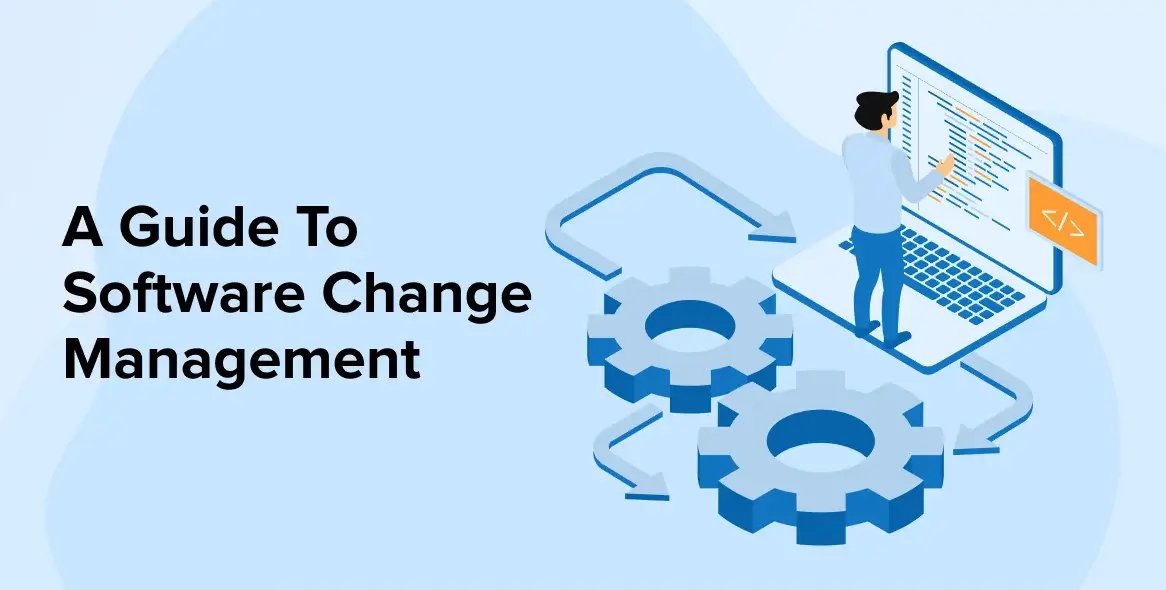
Successful software development relies heavily on change management. The most efficient software engineers keep track of modifications in the same way as the most careful authors keep track of their changes in Google Docs. However, software change management is still largely a mystery to the general public.
Keep an eye out for information that might enlighten you as to why software change management is crucial for your company. For more information on how to efficiently manage software updates, please continue reading.
1. What is Change Management in Software Development Projects?
Change management is a process transitioning the present flawed condition of a software to the new and updated system.
Let’s say you’ve been in charge of a complex custom software development project. You’ve thought of everything, the project goes off without a hitch, and nothing could possibly go wrong. This looks like the ideal situation, doesn’t it? The parties reach an understanding of a new, cutting-edge technological solution at some time in the future. You have to completely rethink your idea in light of this new need.
This is when the techniques of change management become useful. Transitioning from the existing state (before the aforementioned stakeholders opted to adopt the new tech option) to the future scenario (with the fresh approach installed) can potentially be achieved smoothly if the software change management process is followed to every detail.
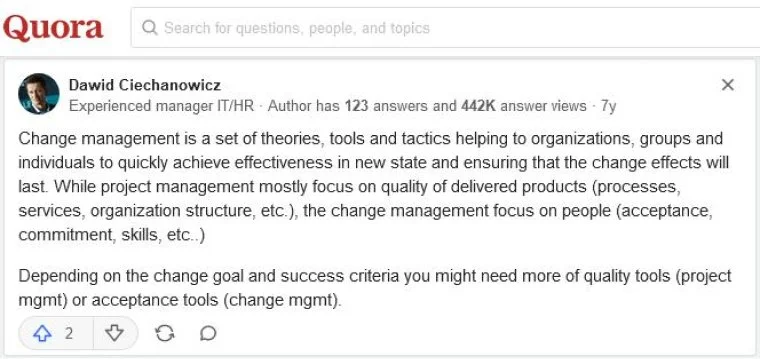
There are several potential triggers for change in software development initiatives. This is especially the case when:
- There has been a shift in the project’s needs.
- Fix the glitches.
- The project has lost several of its crew members.
- There has been a restructuring at your firm.
- Consumer tastes have changed.
- There is room for enhancement in the project’s performance.
1.1 Why Is Change Management Important?
Careful change implementation processes lessen both disruptions and accidents. The following are some of the reasons why change management is crucial:
1. Operational Excellence
When businesses try to do too much, they often end up doing none of them well. Organizations may better execute their business plan with the aid of a change management solution.
2. Risk Management
Change management is risk management in disguise. Before agreeing to execute a change, the team working on it must determine whether or not it would actually be profitable for the firm. To do otherwise would be to take unwarranted chances.

3. Overall Strategy
Any changes made must not compromise the company’s long-term aims. Deciding whether or not to make a certain change crucially relies on the change manager’s knowledge of the company’s future plans.
2. Types of Changes
The key premise is that little changes may have significant consequences. However, not all shifts create equal outcomes. Here are a few distinct shifts that can occur during software evolution management.
2.1 Standard
Modifying the standard is a safe option. They are recurrent, and you can anticipate the means of implementation and the degree of risk involved. Modifications in this category include expanding a device’s storage capacity or RAM. You might also swap out a faulty hardware part. Due to the routine nature of these alterations, they will not significantly impact the project timeline. And there is a clear procedure for making adjustments like this.
2.2 Normal
When things are only changing, it’s not an emergency. However, there is no standard method for addressing them.
Let’s imagine you choose to replace your current CMS with something more modern, maybe HubSpot CMS. It’s a major shift, but it’s inevitable for many new businesses. To handle the relocation process, we need a fresh and unconventional approach to administration. Neither the best way to implement this change nor its ultimate impact on your firm can be known at the outset.
2.3 Emergency/Urgent
Alterations that must be made immediately are the antithesis of routine. There is a disaster unfolding right in front of your eyes. However, you should presumably have experienced enough fire drills to know that panicking and running around aimlessly is never a good idea. Instead, you should talk to the relevant parties and authorities to gain their stamp of approval before taking any drastic measures. However, your rate of recovery will depend on how agile you are. For instance, if you’re experiencing a server outage, you’ll want to restore service as soon as feasible. Depending on the specifics of the situation, the urgency with which you implement the necessary modifications is of the utmost importance.
2.4 Reactive Change
Reactive changes are brought upon by an external factor. Usually, they occur when one least expects it. As a result, reactive changes are notoriously difficult to manage since they are rarely anticipated.
2.5 Strategic Change
They affect the entire company and are the direct effect of the actions made by upper management.
3. The Software Change Management Process
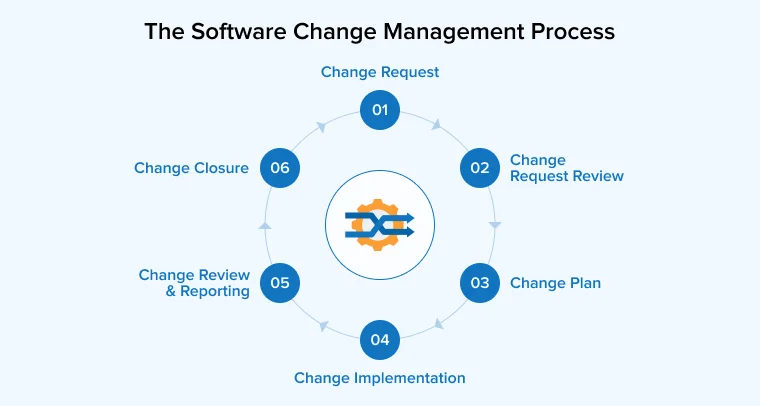
What change management is, how it may help your project, and what kinds of changes you can expect to encounter are all things you now know. It’s time to put everything you’ve learned into practice and figure out what makes for a great change implementation process.
3.1 Change Request
A change request for a project change is necessary for the change to be implemented. In other words, the necessity for a change is recognized by either a project team member, an internal stakeholder, the change manager, or the customer.
The request for the modification should have a solid justification and a clear goal. Modifications to the organizational structure of software development teams or enhancements to the functionality of digital products are examples. A change requester should now compile a list of possible dangers, desired results, and affected locations.
When working on a software project, don’t make any alterations unless absolutely essential. It might end up producing more problems than it solves. And that’s precisely what you shouldn’t do!
3.2 Change Request Review
The team that recommended the change must then make an argument to the stakeholders. Some examples of such positions are upper-level managers, financial advisers, and project managers. A variety of interpretations of the newfound clarity will be held by these individuals. As a shareholder yourself, you should approach this with an open mind.
3.3 Change Plan
Now that you’ve made your choice and garnered support from everyone involved, it’s time to start making plans. Here, decision-makers must craft an exhaustive strategy for dealing with future changes. Important details including needs, timing, budget, and desired outcomes should all be included. It is essential to include potential exit strategies in the change management strategy in case it becomes necessary to abandon the change processes altogether.
Don’t forget to gain buy-in from everyone with a say in the matter; everyone with a stake in the outcome should read and approve the plan.
3.4 Change Implementation
Put the new change process into effect and record any subsequent events. Keep an eye on potential dangers and take steps to mitigate them. Change management typically involves dealing with resistance. Drops in spending, investment dangers, or reliant parties might all be uncovered. Problems can only be solved with capable leadership and sufficient means.
3.5 Change Review & Reporting
When the change has been successfully implemented and reviewed, the change process can be closed.
Reporting on the software change management process and, most crucially, its aftereffects, should be done as the last step of the process. Include information such as how much time and money was spent implementing the modification and whether or not it was a resounding success.
3.6 Change Closure
Thus, the procedure was successful, but it is not yet complete. The ending must now be given. Putting an end to a change is like shutting a book. Now that you’ve reached the last chapter, it’s time to wrap things up. The project’s accomplishments and shortcomings may be analyzed for insights on how to improve future endeavors.
The team may make sure that everyone involved in the project understands how the change will affect it by sharing the findings of the assessment with them. Trust and confidence are reinforced in this way.
Sharing the outcomes of the change analysis also helps future initiatives benefit from the lessons learned. You might be able to help shape future iterations of the process by detailing the ups and downs of the transition.
4. Software Change Management Best Practices
Now that you have a basic understanding of software change management, you should review some industry standards to ensure your entire change process is thorough and effective.
4.1 Understand Your Organization’s Risk Tolerance
In change management, there is no silver bullet for striking the right balance between security and speed. Change management strategies should take into account each company’s business processes, unique culture, level of risk tolerance, and legal needs.
It is crucial to your risk assessment to be familiar with the laws and guidelines that affect your business. When government rules are involved, it’s no longer about whether or not your system can afford a certain amount of downtime before you lose money or how much it will cost to remedy the problem. These regulations are now final and cannot be changed. There will be permissions that need to be obtained. You’ll divide responsibilities. Even if they slow things down a little, regulations like Sarbanes-Oxley and General Data Protection Regulation must be followed.
The positive aspect is that this sort of preparation need not be permanent. To keep the amount of rigor in the company’s procedures in line with the level of risk, companies who opt for a conservative strategy with more clearances and rigorous workflows may always review over time.
4.2 Develop a Well-Defined Change Management Plan
The process of formulating a well-defined change management strategy might be likened to the strategic planning involved in organizing a road trip. One would not go on a journey without a clear destination or purpose. Indeed, in order to successfully achieve the desired outcome, it is important to possess both a roadmap and a well-structured strategy. In the absence of a well-defined strategy, one only engages in aimless navigation, resulting in a lack of progress or advancement.
4.3 Use Automation Tools
In most organizations, you may expect to deal mostly with routine adjustments. This is a wonderful chance to implement some form of office automation.
You’ve probably heard of sales and marketing automation software. The method of managing software changes also makes use of some nifty gadgets. Determine your needs and have a conversation with a reputable service provider to configure automated workflows through data integration.
4.4 Prioritize Collaboration
Effective change management teams now value communication, transparency, and openness in all their endeavors, from change advisory board (CAB) to DevOps teams. Organizational cohesion is the primary goal of change management. The more complex your company develops, the more obvious it is that changes, occurrences, and issues affect more than one unit.
Effective change management cannot occur in isolation. Companies that make an effort to foster more open cooperation are more likely to succeed in their efforts to implement change.
Jira Service Management’s whole design fosters collaboration across different departments to speed up the implementation of improvements. Collaboration is the glue that holds together high-performing teams. With a shared, open platform that includes Confluence, built-in chat and video conferencing, and adaptable workflows, everyone can join in and do their part in their own way while still having access to all of the necessary information.
5. Conclusion
Creating and implementing organizational change management is a difficult but rewarding task. You may rest assured that you have maximized efficiency in software development thanks to a software change management methodology. Customer satisfaction may be boosted by a well-organized development team as well. However, the process of managing change does not have to be that intricate.
Use trustworthy change management tools and high-quality change management software, and you’ll barely have to raise a finger. The data integration procedure will go more smoothly if you have expert software engineers on your side.
Frequently Asked Questions:
How Do You Handle Software Change Management?
There are a few steps that you can follow to handle software change management:
- Change request
- Change request review
- Change plan
- Change implementation
- Change review & reporting
- Change closure
Is Change Management Part of SDLC?
Change management is not technically a part of Software Development Life-Cycle but change management has a major role in the software development process.
Why is Software Change Management Important?
Change management is important to keep the productivity and quality high and risks low and manageable.



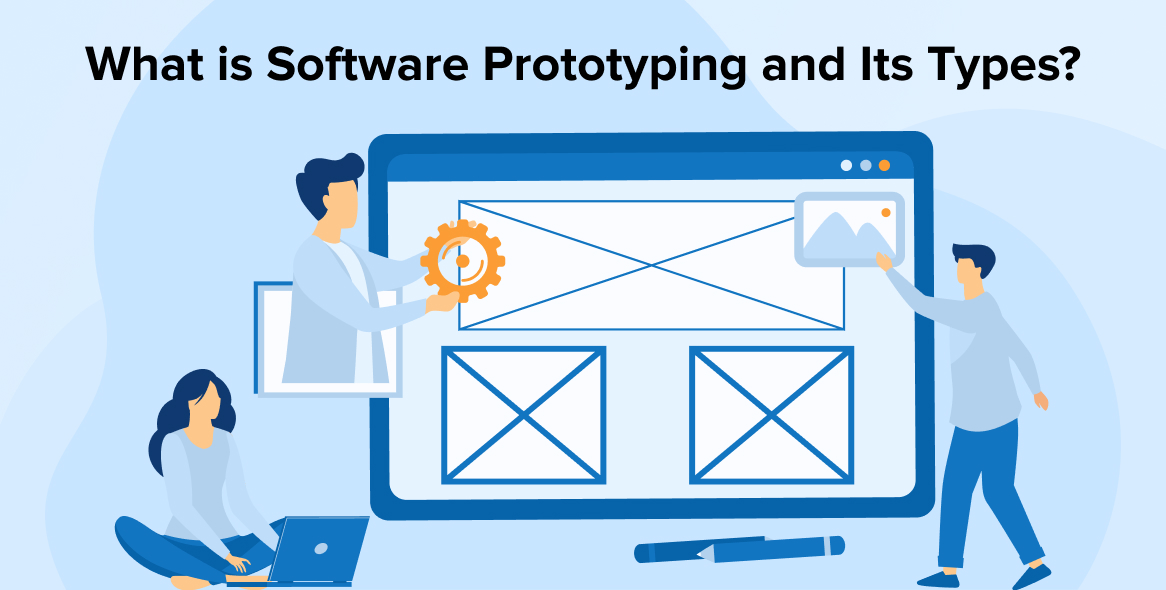
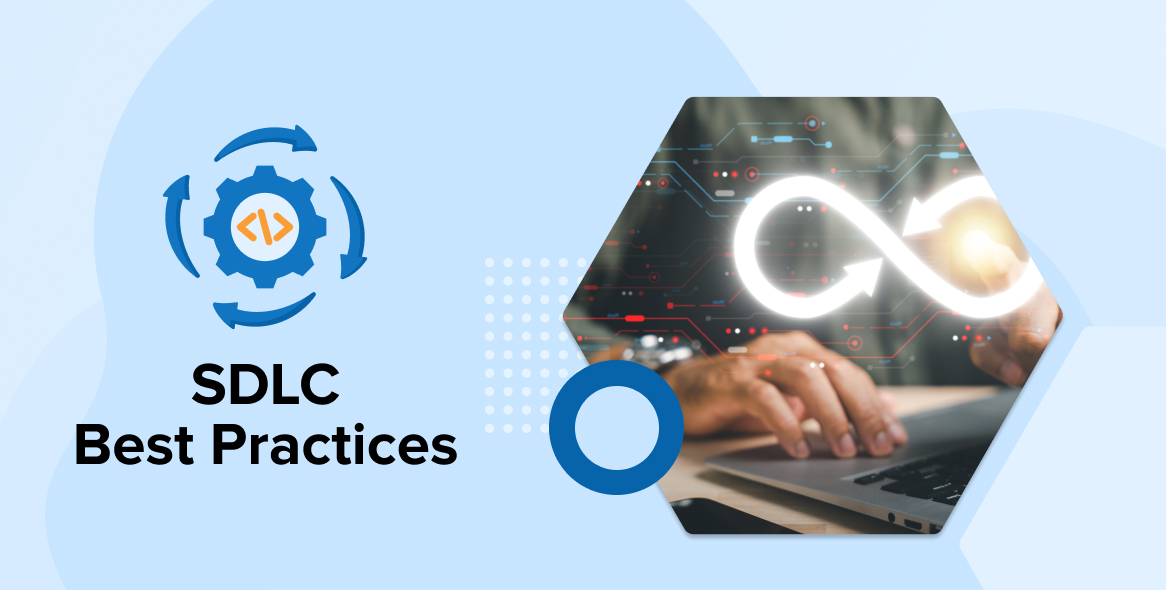

This is a fantastic guide to software change management! It covers everything from the different types of changes to best practices. I especially liked the section on understanding your organization's risk tolerance.